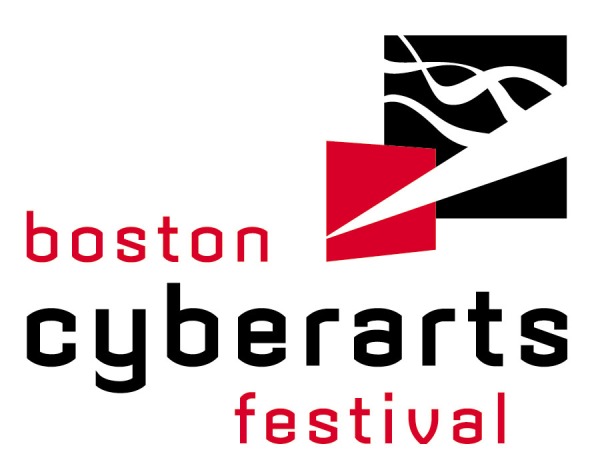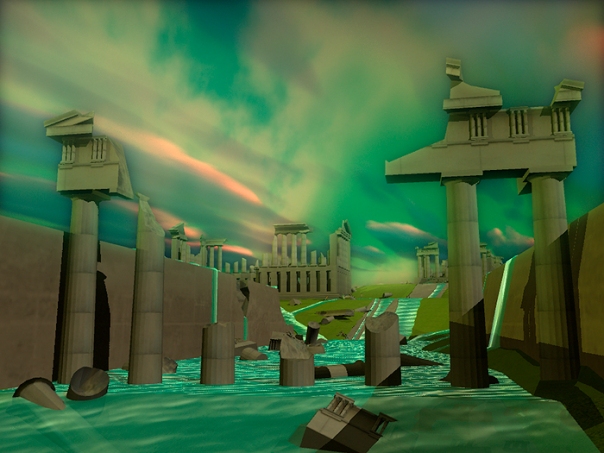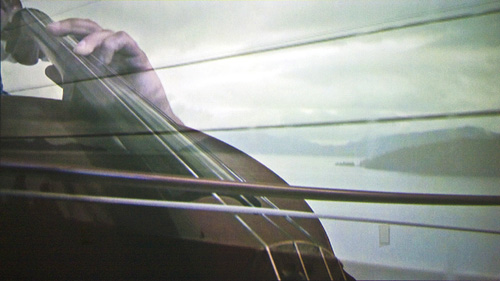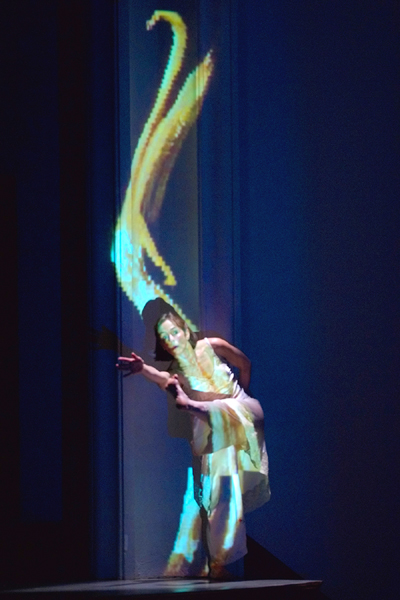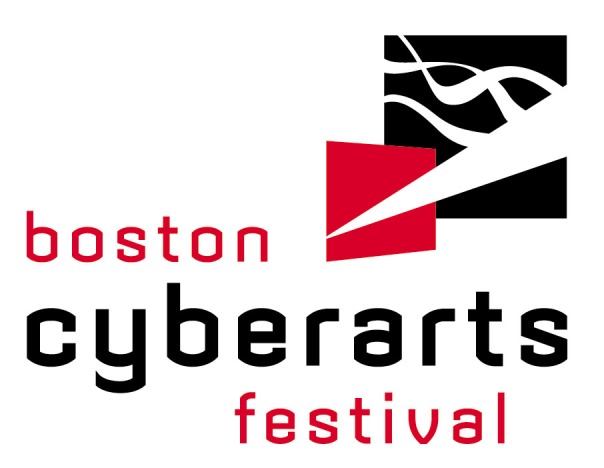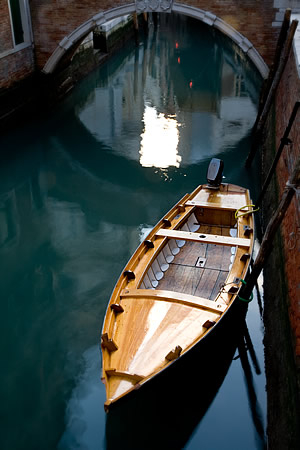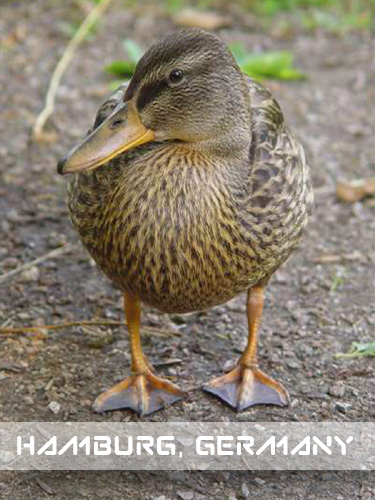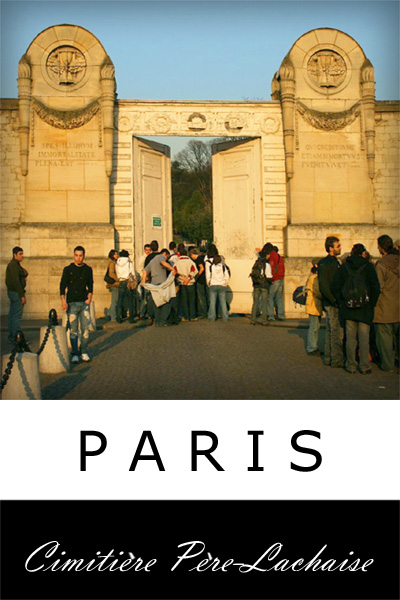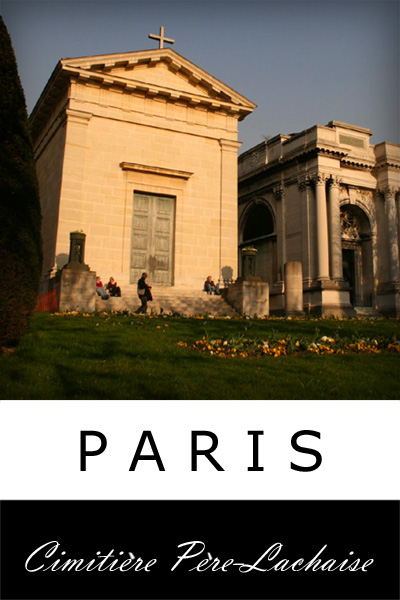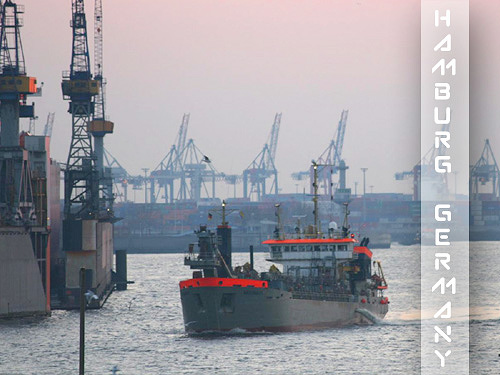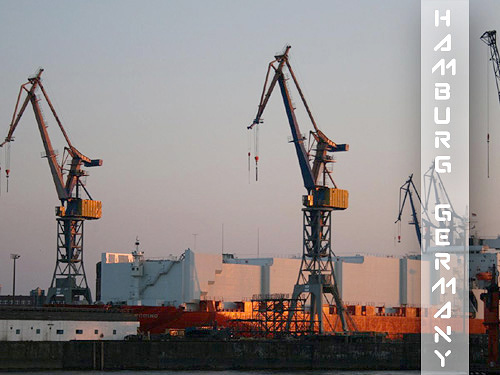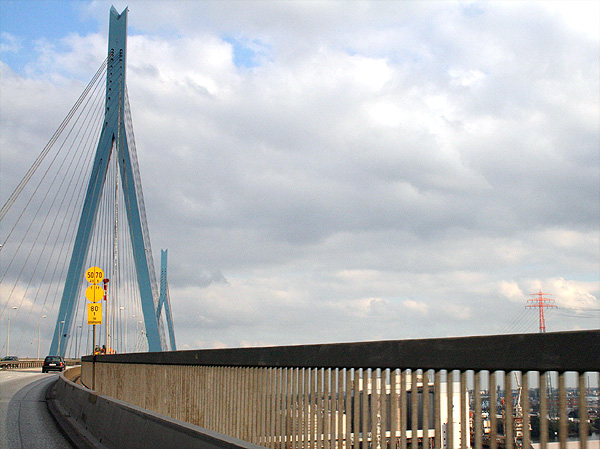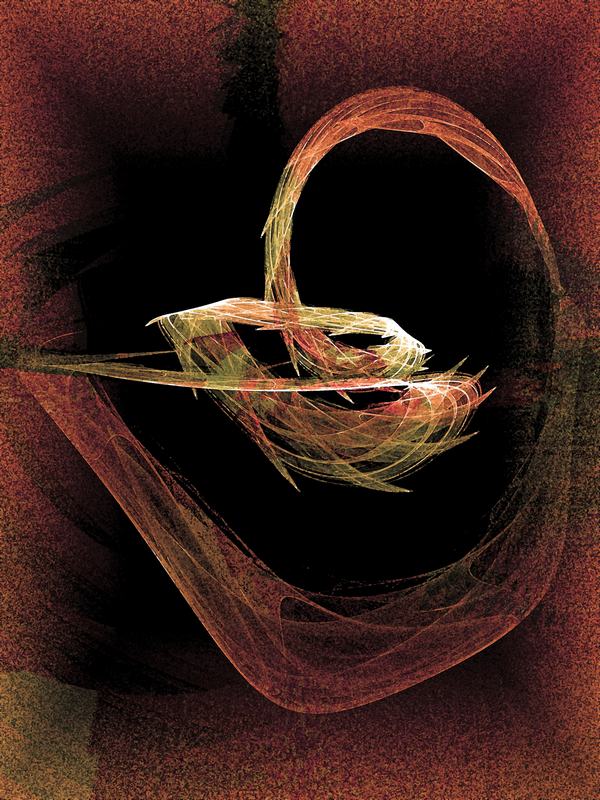
“Nesting” by Solomon Walker
_____________________________________________________
Born in Jamaica, Afro-Canadian artist Solomon Walker uses the digital pallet to create painterly prints and photographic canvas; deep, rich, textural constructions — images that are the embodiment of color and form.
***

- The Sleep Over
***
Feature Interview: Solomon Walker

Pretty Things #16
***
Hi Solomon, welcome to AD Mag
Thanks a lot, Max, am very glad to be here.
Let’s jump right in shall we. How long have you been an artist?
Well, I am blessed to be born into a very creative family, and background, with a long list of creative folks with skills from all areas of the arts. When I was ten years old my family immigrated to Canada from the Caribbean. Very soon afterward, I became fascinated with cartoon characters in comic books, and started to copy the images of my favorite heroes. Landscape and the outdoors also fascinated me, and soon I started practicing drawing all sort stuff depicting nature. I became pretty good at realistically capturing what I saw. The big turning point came for me when I graduated grade eight, and was awarded “Artist of the Year”. I was elated! Then, a recommendation came that I should enroll in my city’s top Art school, and I did. That school, Wexford School of Art, is where I pretty much learned the various techniques in Fine Art.
The work that I’ve seen online appears to have been created with digital tools; correct? Do you work in other mediums?
Yes. I would classify myself as a fulltime Digital Artist. I try working with every digital graphic tool I find; those recommended to me by friends. Creating digitally is fun for me – and no mess!
I started my career on the real canvas, with a traditional education. I was a portrait artist in the early days, and also did graphics and illustrations. My favorite traditional medium is still watercolour, and I do mess about with this on my leisure time. But, for the moment, I have no big desire to get back to mixing watercolour paint. I wish I started my career in digital, but there is certainly no replacing the traditional tools, it was extremely valuable for me.
So, you have a website that you moderate. It’s called Urban Stone Gallery. Could you tell us about that site – its name?
Essentially, it’s a personal blog site where I try and update my fans and associates of what I am currently messing about with on the digital canvas. Although I cant seem to find enough time to spend there. The USG name came about several years ago (late 90’s – I believe). I wanted a unique name to use as a blanket for my digital and traditional art, and possibly a gallery in the city some time in the future.
I do have a few other sites online, including a new project, Museum of Digital Fine Art. With this project, I am trying to inform, to educate artists and art lovers, of the lucrative potential of Digital Art as a serious medium for a future art industry. I also founded and moderate a digital arts group on Imagekind.
In Construct #3218, I see influences from the early Modernist period; could you talk about that piece – that series?
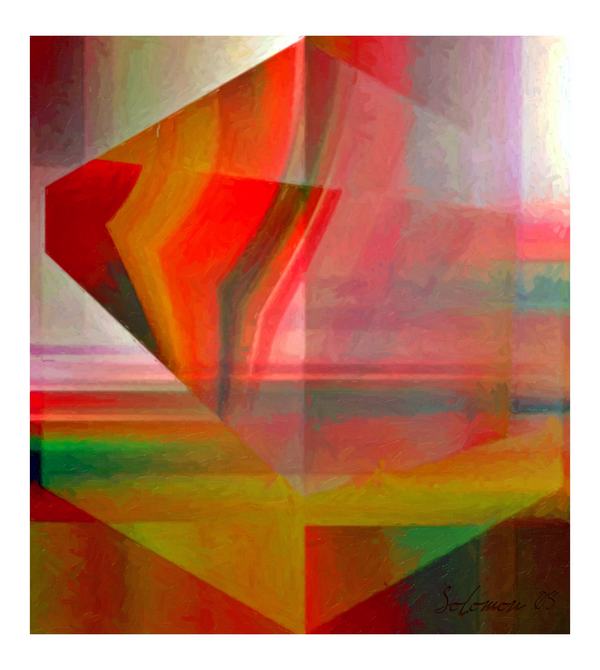
Construct 3128
I am influenced by so many schools of art that its quite hard to pin-point just one. My hero in tradition art is Rembrandt, while my heroes in modern art are all those from every corner of the globe. Though most are mainly from the American schools of the 1940’s – 1960’s. The Polish school of surrealism is a big influence for me at the moment, and some of the new Chinese artists inspire me as well. Am forever learning to learn, and everything deeply inspires me!
The “Construct Series” started about a year ago, when I was trying to fuse my love of Architecture and Design with my painterly style of digital art. I seem loose my senses when I view great architecture (even naturally formed) – and at home I try to keep a collection of books and magazine nearby to peruse. It’s an ongoing series, which I will continue to add pieces as times goes.
You have an incredible use of color and texture in your pieces. At the moment, I’m thinking of the Mandala-like images; those wonderful circles that seem to be cross sections of the seed pods from fruit.
That a wonderful definition, and thanks for that. Although I paint and work mainly on the digital canvas, my influence comes from traditional means. I doodle a lot, and like details. And since I was a portrait artist for a long time, I do consider that training to have embedded itself someplace in my psyche. The “Mandala Series” is like doodling for me, very fun and stress-free!
At the moment am starting to explore more the use of texture and colors in making art digitally. I think that’s very important for me, because I paint from my emotional connections to a subject, and it’s a very quick caption which I ultimately pull from my mind to define that relationship. That’s the main reason why I paint in the abstract. Texture and color are very important in my art.
You’re a Canadian artist, from the Toronto area? What’s that like? Are you a part of the local art scene?
Yes. Toronto is my home, and where I got all of my early art education. It’s a very beautiful and culturally diverse city, with lots creative people to bounce all sorts of whimsy ideas with.
I do have a lot of artist friends here. But, for a long time, I stay out of the hub, mainly because I had to try and make a living away from art. I went into motion picture acting for about five years, and then enrolled in Computer College, becoming a computer technician. I opened a retail store, built and repaired computers, while I painted digitally in my spare-time. Since the autumn of 2007, I started focusing full time on my art career. It’s been a fun ride thus far!
Toronto has hundreds of top quality art galleries and museums, and the art scene here is usually quite lively. At the moment it’s a bit dampened because of the uncertainty of the economic situation across the globe. But, am sure things will pick right back up as folks gather optimism and confidence within themselves and from other places. I am looking forward to participating in some local shows this summer and autumn.
As you might already know, in America there are very distinct “racial” lines, with it being so much the case that in the course of everyday life, Negros, Black people (African-Americans) live a parallel life; an existence apart from (alienated?) the mainstream, yet which deeply influences the mainstream – white society and culture. In so far as, that no matter how acceptable we (myself being a Black man) become are appear to be, we continue to be outsiders; by force and by choice. We are apart of – we are apart from. And nowhere is this more seen than in the art world, as most of the mainstream moneyed galleries represent Whites, Asians and a small percentage of Latinos, but very rarely representing a Black person. In America, the art world is largely a racist (anti-Black) segregated place. There was even a documentary film called Colored Frames, which was created to speak to this issue.
From looking at your photo, you appear to be a Black person. Though, regardless of your race or ethnicity, I’m curious to know if this dynamic is what you also see in Canada – your experiences?
Well, its definitely not a color-blind world, even in Toronto, or elsewhere across the globe. I do feel fortunate that I was born in the Caribbean (of mixed heritage), where folks are not usually pre-occupied with the issue of race. The big issue there in the tropical climate is class-ism, which certainly has its dark side as well. Being here in Canada, I cannot say I personally felt that kind of racism, but I know it exist. The interesting thing we seem have going here is a sense of assimilation. Racial lines are usually blurred on the surface, and folks inter-mingle quite freely on a daily basis. It may sound a bit Utopian, but that’s the sense I gather as I move about the cities and rural areas.
Regarding cultural issues in America, I don’t really know enough to give it proper justice. What I do know is that art is universal, and even though an artist may feel trapped in one corner of the globe, they may gain big praise in other places. It’s very important, from my experience, that people, whether in the creative field, or otherwise, step outside comfort zones. Don’t let others define you; you have to make a concerted effort to define yourself, always. That goes for any group as well.
My hope is that African-American artists, and other artists from various ethnic groups, who may feel neglected or mis-represented, stop waiting for any one gallery, or set of galleries, to approve their work. It’s just too small a peep hole to try and get everyone through! Since art is basically measured by its perceived value, by the amount of folks collection it, market demands, etc…then its very important for the individual artist, or group in a movement, to persistently up that perceived value daily, weekly, yearly, in order to have the painting become even sought-after by those folks who perceive that its important. It’s the best way to win the game!
Another thing to consider is the universality of the subject and themes of the art itself. I believe, to truly thrive and survive in the art market, an artist work has to have some sort of appeal to perspective buyers not only on the busy fashion avenues of Paris, nor gated cities of Boca Raton, or French Riviera; but in Bombay, India, as well and Kowloon, China. Artists shouldn’t get stuck just painting their own cultural experiences, but do try and step outside their neighborhoods and find empathy with other cultures, other causes.
How do you see art? What is art – its role in life?
I see art as personal, just as I perceive faith and belief. It comes from inside. When we draw or paint, we can then share this art on the surface with our fellows to enjoy, to contemplate. We are essentially giving the beholder a sneak preview of an otherwise private world. Of course, every artist has his/her definition, and that is why it’s such a personal experience. I could not say why another individual may create art, neither can anyone else. I believe the need is deeply complex, and for some a must, in order to continue the long journey through life. Art is whatever it’s creator conceived it to be; and then the role it may have in life is pretty much whatever the viewer can extract from it. Whether to heal or to motivate, its role is endless as the sky above.
Your hopes and ambitions for the future?
To keep creating interesting images. Am an optimist by nature, so the world around me is an open canvas, to add dabs of paint here, a bit of shade there, and some texture yonder…
For myself and the readers of AD Mag, I’d like to say thank you for sharing your life and your art.
My pleasure. I very much enjoyed this session with you. Best wishes and continued success.
______________________________________________________
More of Solomon’s work can be seen in the AD Mag Artists Gallery. A be sure to visit him on the web.
______________________________________________________
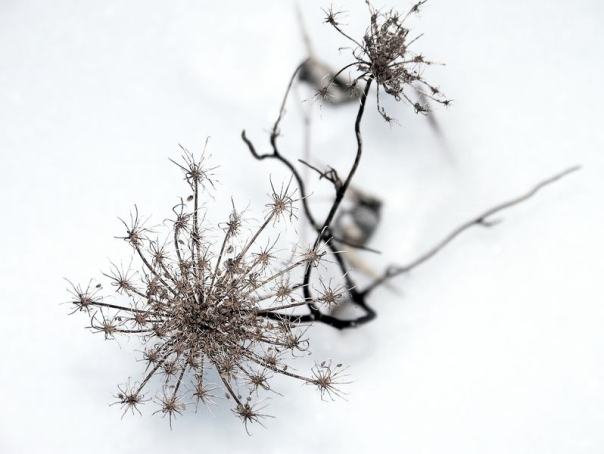 – Pretty Things #15 –
– Pretty Things #15 –
